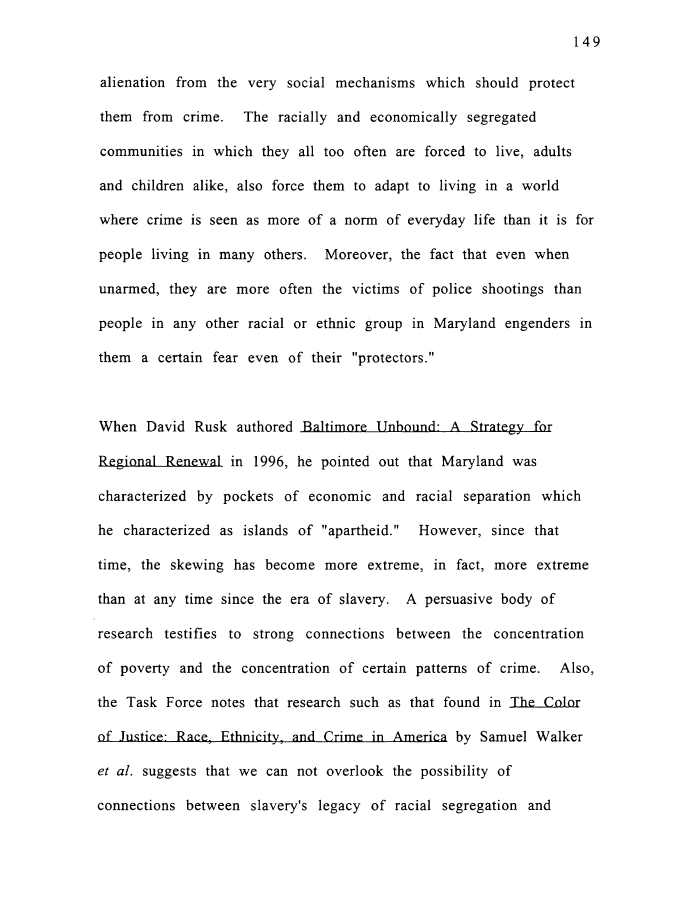 |
||||
|
TASK FORCE TO STUDY THE HISTORY AND LEGACY OF SLAVERY IN MARYLAND (Final Report) 1999/12/31 MdHR 991422 MdHR 991422, Image No: 158 Print image (42K) |
 |
||||
|
TASK FORCE TO STUDY THE HISTORY AND LEGACY OF SLAVERY IN MARYLAND (Final Report) 1999/12/31 MdHR 991422 MdHR 991422, Image No: 158 Print image (42K) |
| 149 alienation from the very social mechanisms which should protect them from crime. The racially and economically segregated communities in which they all too often are forced to live, adults and children alike, also force them to adapt to living in a world where crime is seen as more of a norm of everyday life than it is for people living in many others. Moreover, the fact that even when unarmed, they are more often the victims of police shootings than people in any other racial or ethnic group in Maryland engenders in them a certain fear even of their "protectors." When David Rusk authored Baltimore Unbound: A Strategy for Regional Renewal in 1996, he pointed out that Maryland was characterized by pockets of economic and racial separation which he characterized as islands of "apartheid." However, since that time, the skewing has become more extreme, in fact, more extreme than at any time since the era of slavery. A persuasive body of research testifies to strong connections between the concentration of poverty and the concentration of certain patterns of crime. Also, the Task Force notes that research such as that found in The Color of Justice: Race., Ethnicity., and Crime in America by Samuel Walker et al. suggests that we can not overlook the possibility of connections between slavery's legacy of racial segregation and |